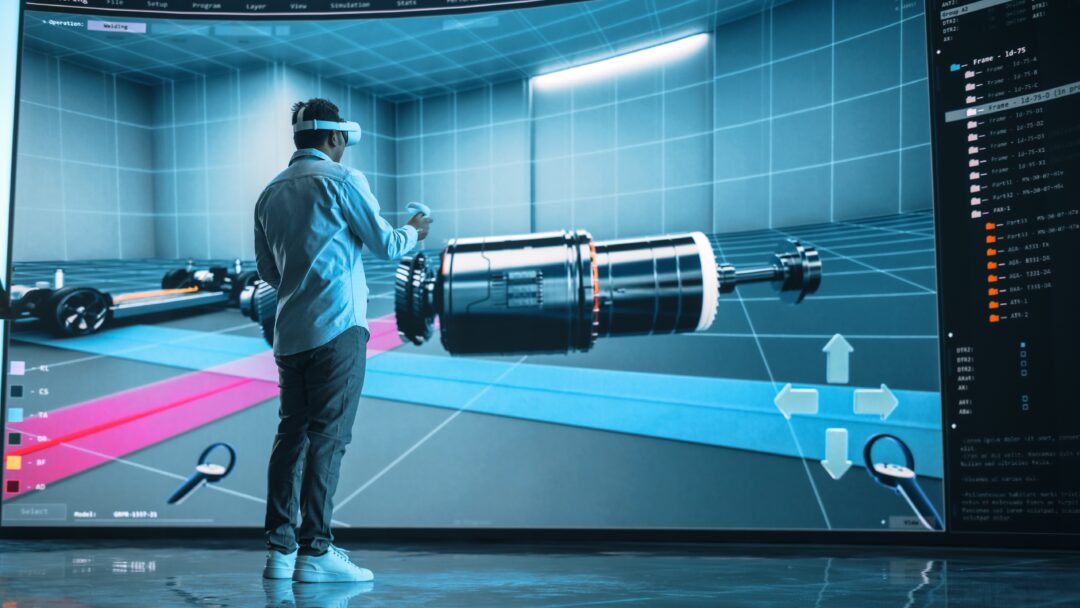Dr. Hendrik Witt, chief product officer at TeamViewer, discusses how the industrial metaverse is set to disrupt manufacturing operations
Current focus about the metaverse is often on the consumer experience. In fact, the UK audience has the highest curiosity in the metaverse in Europe, with the highest average online searches. The metaverse; a virtual reality (VR), with digital representations of people and things in a seemingly separate, 3D ‘virtual’ world. We associate the metaverse with the likes of avatars and virtual social experiences such as shopping, accessing this different world through VR headsets, disconnected from the physical world. If instead we try to achieve a broader understanding of the term “Metaverse”, we could define it as the result of the continuing convergence of the physical world and the internet powered by immersive technology.
Deploying the industrial metaverse
Metaverse technology can be deployed in the industrial sector to assist frontline workers already, however, this isn’t in the traditional sense of avatars and headsets. For frontline workers who rely on their hands to repair, move or maintain real-world objects, a device like a virtual reality headset — that shuts them off from the real world — is counterproductive. The industrial metaverse requires other equipment to connect the worker with the digital and physical world at the same time.
The industrial metaverse empowers workers
While the consumer-orientated metaverse digitalises people and effectively transports them to the virtual world, the industrial metaverse digitalises information to transfer them to the worker. This empowers workers by displaying relevant information or virtual objects in their field of view at the exact time they need them.
Technological advances in augmented and mixed reality (AR and MR), such as smart glasses, have made this possible. Improvements to these technologies enable workers to display information, receive entire step-by-step workflows or even interactive 3D holograms. These can all be blended into the real world, without obstructing the worker’s view, providing a solution to traditional challenges of metaverse technologies for frontline workers.
New devices, such as smart glasses do enable interactions with the real world while being connected to the digital world. However, it’s the software that unlocks the full potential of the industrial metaverse. For frontline workers, this involves displaying real-time data from backend systems, interactive and immersive training workflows or step-by-step instructions to maintain a machine.
The use cases for the industrial metaverse are pretty much unlimited. Every task can be improved by hands-free access to relevant information or be made more efficient by the reduction of error rates. These benefits can be realised across the industrial sector from logistics to assembly, administration and services, training, or maintenance.
The industrial metaverse is already a reality
Businesses are already deploying the industrial metaverse. Technically advanced companies use augmented or mixed reality solutions to reduce error rates and improve training experiences in different areas across value chains.
The industrial metaverse did not need to be announced, like Meta tried with the consumer version. The industrial metaverse is already happening, it’s just not as prominent in the customer facing part of businesses. It’s a reality though for frontline workers in factories, logistic facilities, and training centres. The trend will be for businesses to not only digitalise single processes, but their entire value chain, connecting the worker to the data that covers the whole process.
For example, in the car manufacturing industry, managers need to train workers, along with managing logistics and getting the parts assembled, as well as ensuring quality control. All these processes can be improved, by connecting workers in the industrial metaverse. Each worker can benefit from the data generated by colleagues in previous steps. Processes can be accelerated with live data, while training and management can be improved by evaluating the accumulated data of the processes working together. Deploying the industrial metaverse optimises the manufacturing industry.
Return on investment is a key to driving innovation
Deploying the industrial metaverse has many benefits for businesses. Foremost, it helps to increase return on invest by reducing error rates and improves speed in training, picking or assembly. Digitalising processes, results in lower costs and an increased pace of work. But that’s not all — considering the state of digitalisation for frontline workers compared to office workers, it really is time to bring digitalisation to the shop floor.
While meetings, communication and paperwork in the office has been digitalised for years, workers in manufacturing or quality control are still equipped with printed handbooks and paperwork. Enabling your workforce to leverage the advantages of AR and MR technologies, will greatly improve ergonomics, productivity, and overall satisfaction in the industrial sector.
Investing in the industrial metaverse now, will enable your business to remain at the forefront of advances in the industrial sector, improving the efficiency and quality control of your supply chain for the future.

Related:
The making and value of metaverse worlds — Jean-François Bobier, partner and director at BCG, discusses how metaverse worlds, or m-worlds, are created to drive value for businesses.
The value of real-time and historic data in manufacturing — Thomas Degen, solutions engineer industries at KX, discusses how combining real-time and historic data can improve the manufacturing process.







